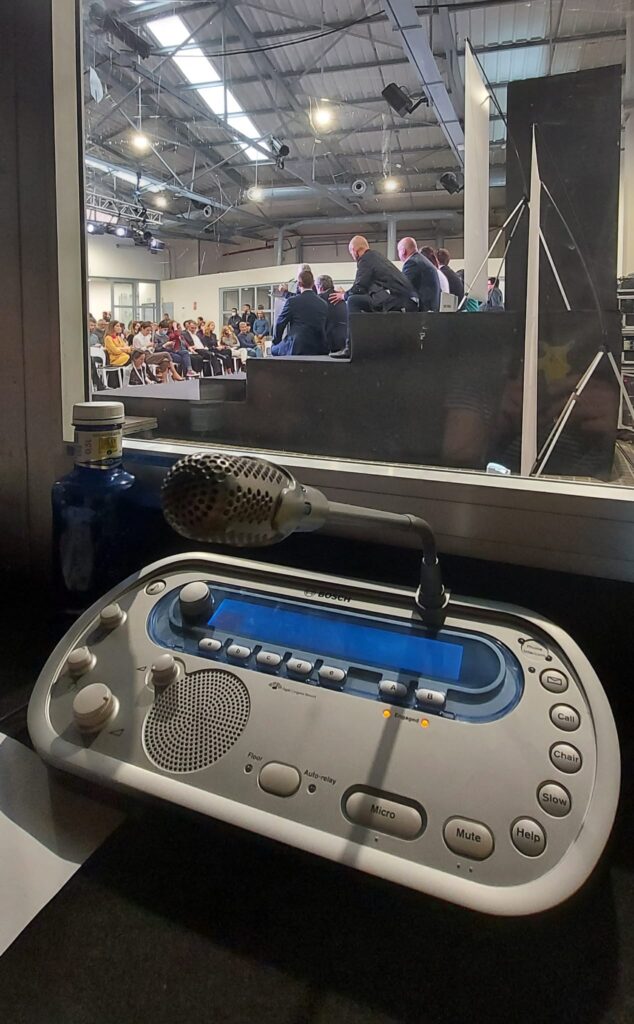Interpretation
We offer simultaneous interpretation solutions for any event, whether in person, hybrid or online.
Why choose interpreting?
Promote inclusion and diversity
Organize more efficient meetings
Achieve greater participation
Promote team spirit
If you have an interpreting event, you need to identify some basic facts.
For example, when and where will it be held? What are the language combinations required? What is the theme of the event? What is the approximate duration? Who will participate?


Here are some examples:
- International congresses and symposiums
- Pitch with foreign investors
- Training with foreign professors
- Conferences
- Corporate merger processes,
- Integration events
- Negotiations
- Union meetings
- Cultural presentations
… The list is endless.
TYPES OF INTERPRETING
Simultaneous Interpreting
Simultaneous interpretation is the oral translation of a speech in real time. It is usually used in formal events where a group of people from two or more countries meet. If the event is face-to-face, the interpreter works in a soundproof booth and uses a console to activate the interpretation channels, as well as a transmitter and a receiver. If the event is online, the interpreter uses a virtual console with the same features as a real console.
With the digitalization of companies, remote simultaneous interpreting (RSI) complements traditional simultaneous interpreting with many advantages, as it facilitates time reduction, the possibility of localizing more language combinations, event planning and cost reduction.
Consecutive Interpreting
In consecutive interpreting, the speaker delivers his or her speech, the interpreter takes notes and then translates the speech orally. It is important that the speaker's speech does not go on for too long, to give the interpreter the opportunity to capture all the information as well as its nuances. Consecutive interpreting is used for witness testimony at trials, job interviews, press conferences, meetings and even medical consultations.
Whispered Interpreting
Whispered interpreting or chuchotage is done in the client's ear or in a low voice slightly behind the client, without interruptions. This type of interpreting is used when speech is being produced in a language that everyone but the client understands, so it should be done as discreetly as possible.
Bilateral or liaison interpreting
In this case, the interpreter facilitates communication between two interlocutors or two small groups of people who speak different languages. The interpreter listens to what each group or speaker says and translates it for the opposing group.




